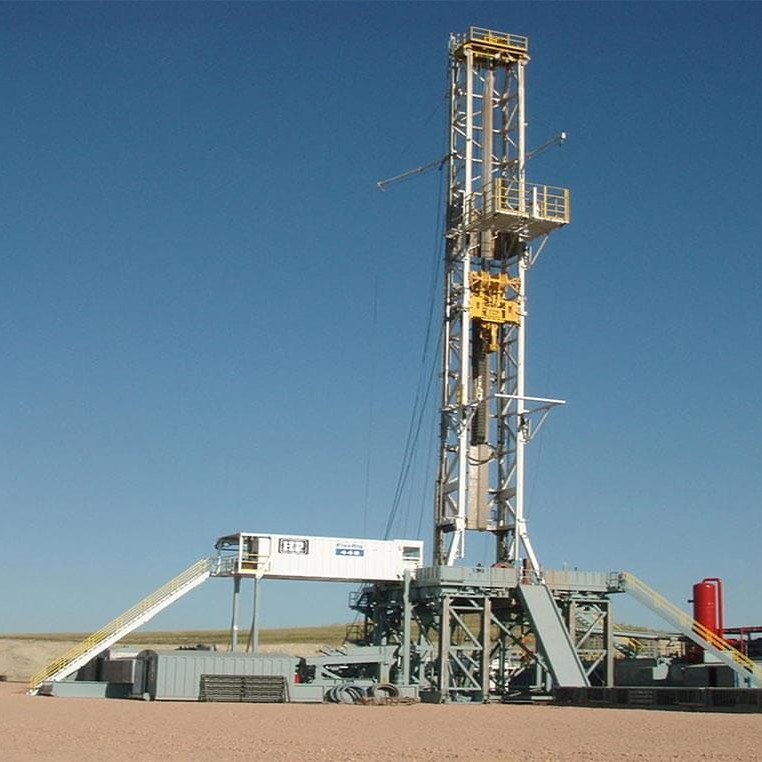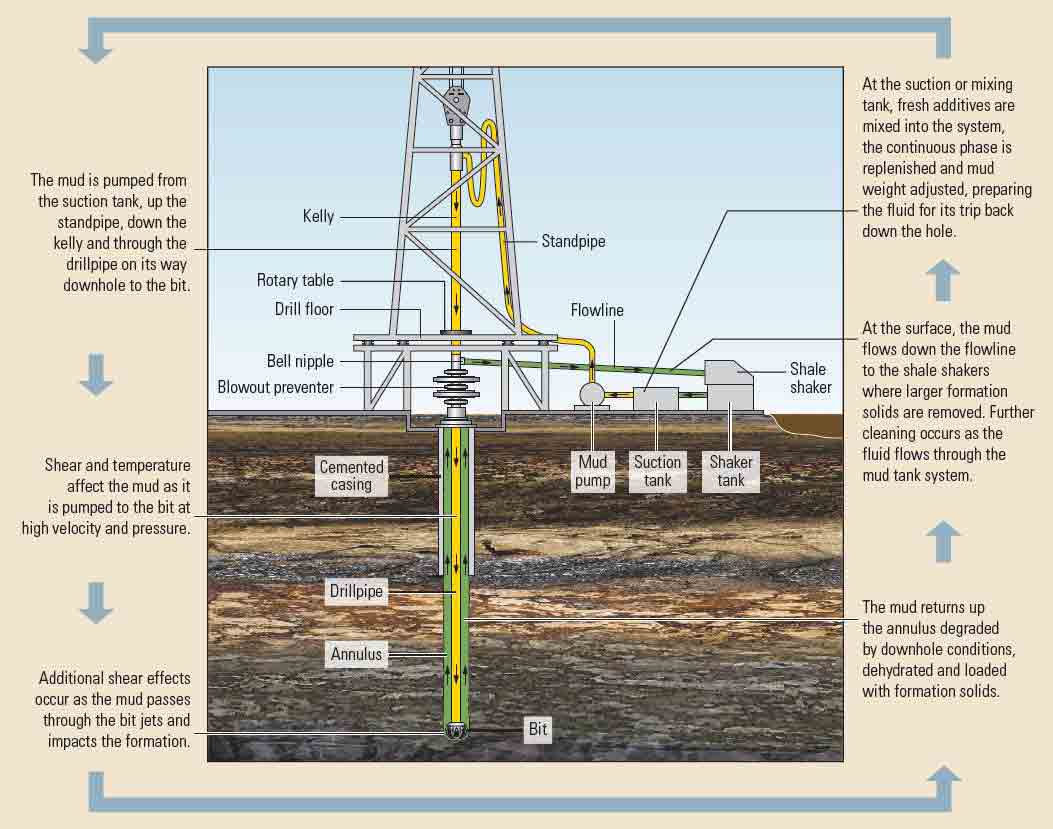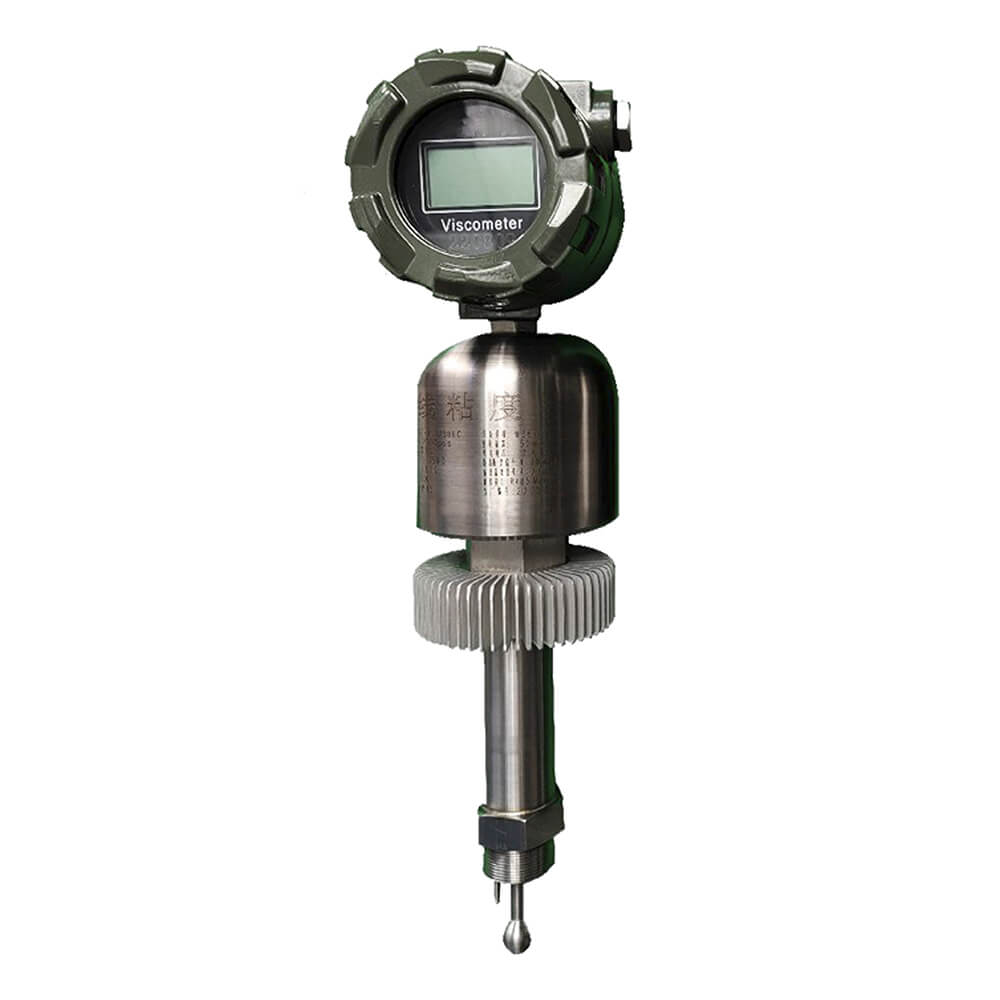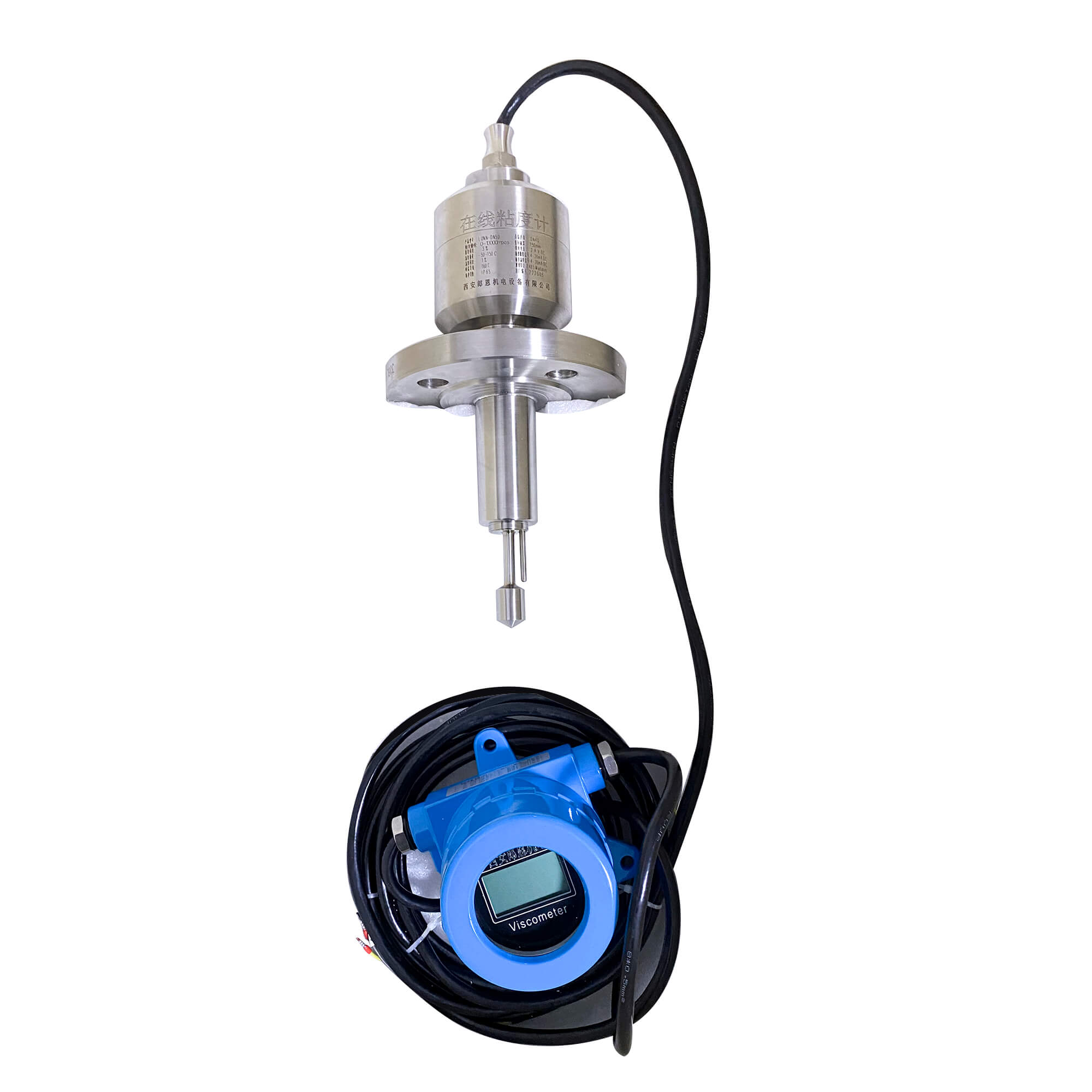Drilling mud density and viscosity are two primary parameters influencing drilling performance, borehole stability, operational safety to prevent fluid influx and formation fracture. Drilling mud is a significant fluid transporting cuttings to the surface efficiently.
Overview of Large-Scale Well Drilling
Well drilling process lasts for months in the oil and gas industry, which requires precise real-time monitoring of drilling mud to lubricate the drill bit, remove cuttings, and stabilizes the wellbore. Inline monitoring using advanced tools like the mud slurry viscometer and mud density sensor ensures real-time adjustments, optimizing performance in these challenging conditions.

Understanding Drilling Mud Properties in Large-Scale Drilling
The drilling mud viscosity range typically spans 15 to 100 centipoise (cP), varying with mud type and drilling conditions such as high-angle wells or long horizontal sections. In large-scale operations, maintaining this range is essential to prevent issues like stuck pipes or poor hole cleaning, which can escalate costs and delay timelines. Similarly, drilling mud density controls hydrostatic pressure to prevent blowouts, ranging from 8.5 to 20 pounds per gallon (ppg), a critical factor in deepwater and HPHT drilling where pressure windows are narrow.
Fluctuations due to temperature, pressure, or mud composition are common in large-scale wells, making continuous monitoring indispensable. Inline systems provide real-time data, enabling operators to adjust mud formulations or drilling parameters swiftly, ensuring profitability in demanding projects.
Why Inline Monitoring Matters in Well Drilling
Inline density and viscosity monitoring of drilling mud integrates density meters and viscometers into the circulation system, offering continuous insights during large-scale drilling. The mud viscometer performs drilling mud viscosity measurement in real time. This is vital for managing mud behavior in extended-reach wells, where high viscosity aids cuttings transport, while lower viscosity prevents circulation losses during drilling pauses.
The mud density sensor complements this by tracking drilling mud density, ensuring sufficient hydrostatic pressure to stabilize deep boreholes and prevent formation damage. In large-scale operations, Lonnmeter’s online viscometers are strategically placed in the mud return line or active system, delivering data to control units. This allows dynamic adjustments to mud additives or weighting materials, critical for maintaining well integrity over months-long drilling campaigns.

Lonnmeter’s Experience and Product Solutions
With over a decade of experience in the oil and gas sector, Lonnmeter has established itself as a leader in viscosity and density monitoring for large-scale well drilling. Their expertise spans HPHT wells, deepwater projects, and extended-reach drilling, where accurate mud management is paramount. Lonnmeter’s inline viscometer measures viscosity with high sensitivity, detecting minimal changes across a wide range.
These sensors are crafted from durable materials like Stainless Steel 316L, with Hastelloy C22 options for enhanced fluid compatibility in abrasive drilling environments. They are designed for robustness, unaffected by downhole vibrations or high flow rates, and feature self-cleaning probes to prevent deposits, ensuring reliable performance in large-scale operations. Lonnmeter’s compact designs also fit the space constraints of logging-while-drilling (LWD) and measurement-while-drilling (MWD) tools, a testament to their adaptability in modern drilling technologies.
Lonnmeter’s solutions have been validated in field tests, where the inline process sensor provided continuous, accurate mud density and viscosity data, optimizing drilling performance in real time. This capability has helped operators recognize fluid changes, analyze trends, and reduce costs associated with mud over-treatment, a significant concern in large-scale wells where mud can account for 5-15% of drilling expenses.


Benefits of Inline Monitoring with Lonnmeter
- Precise drilling mud viscosity and density monitoring enhances cuttings transport and reduces downtime, crucial for the extended timelines of large-scale wells.
- Maintaining the correct viscosity of drilling mud and density prevents blowouts and stabilizes boreholes, especially in HPHT or deepwater conditions.
- Real-time data from Lonnmeter’s mud viscometer and mud density sensor minimizes waste, lowering material costs in prolonged drilling operations.
- Consistent mud properties reduce wear on pumps and drill strings, extending equipment life in demanding environments.
- Accurate monitoring ensures adherence to environmental standards, a priority in large-scale projects with significant mud discharge.
Challenges in Traditional Density & Viscosity Monitoring
Inaccurate and Delayed Measurements
Traditional monitoring often involves manual sampling and laboratory analysis, which can introduce delays of hours or even days. These methods rely on periodic checks rather than continuous data, leading to outdated density and viscosity readings. For instance, in drilling operations, where drilling mud viscosity or drilling mud density can change rapidly due to temperature shifts or gas entrainment, such delays can result in suboptimal mud performance, increasing the risk of wellbore instability or equipment damage.
Susceptibility to Environmental Factors
Conventional tools, such as handheld viscometers or hydrometers, are highly sensitive to environmental conditions like temperature, pressure, and vibration. In large-scale well drilling, these factors can skew viscosity of drilling mud or fuel viscosity measurements, leading to inaccurate adjustments. This inconsistency is particularly problematic in high-pressure, high-temperature environments, where precise control is critical.
Labor-Intensive and Costly Processes
Traditional monitoring requires frequent manual intervention, including sample collection, transportation to labs, and data interpretation. This labor-intensive approach not only increases operational costs but also heightens the risk of human error. In fuel atomization processes or extended drilling campaigns, where mud slurry viscometer or mud density sensor data is needed continuously, these inefficiencies can escalate expenses and delay project timelines.
Limited Real-Time Adaptability
Unlike inline systems, traditional methods lack the ability to provide real-time feedback for dynamic adjustments. For example, in drilling, the inability to instantly adjust drilling mud viscosity range based on changing conditions can compromise safety and productivity.
Maintenance and Calibration Issues
Traditional devices often require frequent calibration and maintenance, which can be challenging in remote or harsh environments like offshore drilling rigs. Over time, wear and tear or contamination can degrade the accuracy of mud viscometer or density measurement tools, necessitating costly replacements or downtime for repairs.
Inability to Handle Complex Fluids
Modern drilling muds and fuels often contain complex formulations, including additives, polymers, or gas-cut fluids. Traditional monitoring struggles to accurately measure the viscosity of drilling mud or drilling mud density in these heterogeneous mixtures, leading to unreliable data. This limitation is a significant drawback in large-scale operations where fluid properties vary widely.
Advantages of Lonnmeter Automation Solutions
Real-Time Monitoring and Control
Lonnmeter inline density meters and viscometers provide continuous, real-time measurements of viscosity and density, enabling immediate adjustments to process conditions. This capability ensures optimal performance in applications like drilling mud management or fuel atomization, where timely data can prevent inefficiencies or safety issues.
High Accuracy and Reliability
Engineered with robust materials like stainless steel and options for Hastelloy or titanium, Lonnmeter devices deliver accurate readings even in harsh conditions. Their design minimizes the impact of temperature, pressure, and vibration, offering stable and repeatable results critical for quality control in large-scale operations.
Durability and Low Maintenance
Lonnmeter’s inline instruments are built to withstand rugged industrial environments, including high-pressure and high-temperature settings. With self-cleaning probes and a “plug and play” design, these devices require minimal maintenance, reducing downtime and operational costs over their long service life.
Wide Compatibility with Fluids
These meters and viscometers are versatile, handling a range of fluids from viscous slurries to light oils and complex mixtures. This adaptability makes them suitable for diverse applications, such as monitoring drilling mud viscosity or lime slurry density, without needing frequent reconfiguration.
Easy Integration and Installation
Lonnmeter devices feature customizable process connections (e.g., flange, clamp, or direct insertion) and compact designs, allowing seamless integration into existing pipelines or tanks. This flexibility simplifies installation and supports continuous monitoring without significant system modifications.
Cost Efficiency
By providing precise data that reduces over-treatment of fluids and minimizes waste, Lonnmeter inline solutions help lower material and labor costs. Their long-term reliability also decreases the need for frequent replacements, offering a cost-effective solution for industrial processes.
Enhanced Safety
Real-time viscosity and density monitoring help detect anomalies that could lead to equipment failures or safety hazards, such as blockages or unstable fluid conditions. Lonnmeter’s intelligent systems include alarms for exceeding preset ranges, enabling proactive measures in hazardous environments.
Support for Process Optimization
The ability to transmit data via 4-20mA or RS485 signals allows for remote calibration and integration with automation systems. This supports process optimization by enabling operators to adjust parameters like atomizing air pressure or mud density dynamically, improving overall efficiency.
Highlights of Lonnmeter Inline Process Sensor Customization
Drilling fluid companies are increasingly seeking innovative solutions to enhance operations amid rising demands for efficiency, safety, and environmental compliance in large-scale well drilling. Customize probe lengths, process connections and even intelligent systems allowing seamless integration into existing mud tanks, flowlines, or high-pressure systems, catering to the diverse setups of modern drilling rigs.
Lonnmeter is one of ideal options for industrial companies who are ready to revolutionize your drilling fluid management or fuel atomization process with inline density and viscosity solutions. Request a quote today to explore customized sensor options tailored to your needs, and take the first step toward optimizing your operations with Lonnmeter’s proven expertise!
Post time: Jul-30-2025










